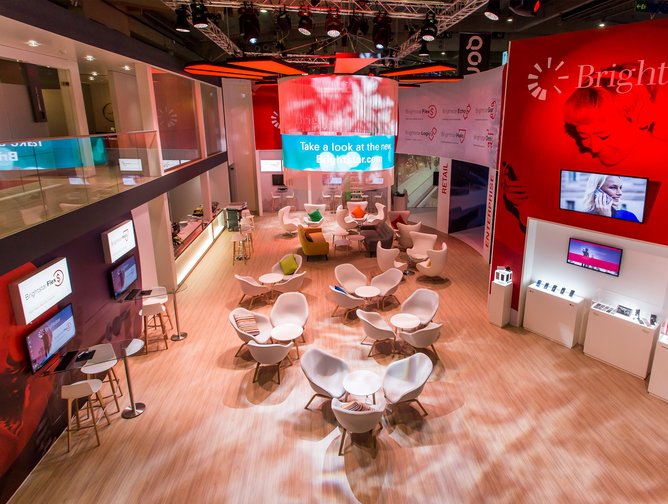How Brightstar is making mobile technology accessible with its latest digital disruption
Like any product, today’s mobile devices have a clearly defined lifespan and Brightstar has placed itself firmly at the heart of it. Tapping into today’s wireless ecosystem, the company looks after every stage of a device’s lifecycle for its customers, from the moment it’s manufactured to the moment it’s time to trade it in and re-market it.
Serving carrier, retail and enterprise customers as well as running programs for device brands directly, the SoftBank subsidiary processes over 80 million devices every single year. Now, to keep pace with today’s evolving market, Brightstar has embarked on a root-and-branch digital transformation, one which strives to standardise its solutions and deliver the same high-level service time and time again.
Rising to the role of CIO of the company’s Asia-Pacific region, Mariela Millington has racked up an impressive 30 years of experience in the IT sector. During her past three years at Brightstar, Millington has seized the challenge and helped the company navigate its latest digital transformation. “One of our biggest focuses is that we are re-architecting our environment,” she explains. “Through this, we are moving away from offering a bespoke country or even single customer solution to deliver a more unified platform that still manages to be customer-centric.”
Pivoting from a mainly distribution-focused organisation to a wholly service-orientated one, Brightstar has undergone many seismic shifts since it was founded in 1997. This latest change will ensure that, regardless of where the company’s products are bought, the level of service will remain consistent. “Before, when we sold similar services in different regions, they weren’t exactly the same and the customer experience wasn’t consistent,” observes Millington. “Now we’re rearchitecting not just our technology landscape, but also how we sell and distribute products and that will really help us.”
Serving industry giants, Brightstar’s client base makes for impressive reading. But on this journey, the company hasn’t forgotten the end customers who are impacted by its services. It is this unique perspective, says Millington, which has helped the company cut through the noise when debating functionality and service features.
“Strategically we look at how our services will touch the end consumer,” she explains. “That means we’re looking at how we can enrich the experience not just for our own direct customers, but also for our customers’ customers. That's really changed how we create solutions. It’s really a reinvention of Brightstar, how we look at ourselves and the way we offer our services.”
With five major lines of products and services – supply chain and logistics; device protection; financial services; buy-back and trading services; as well as core distribution of devices and accessories – underpinned by a domain-specific advanced analytics capability, Brightstar has a substantial roster to offer. As a result, the company can offer complimentary services regardless of what phase a device is at in its lifecycle. “For us, having complimentary services allows the customer to really leverage the investment they made in their fleet of devices. Being able to manage those devices from birth to death is quite unique in that we can deal with both new devices and old devices in a seamless way. That’s one of our key differentiators.”
Along this journey, Brightstar has also reformulated the way consumers interact with the company, introducing a new business process management (BPM) layer that orchestrates the interaction between all relevant parties. Through this initiative, the company hopes to establish itself as a digitally-savvy partner for its customers, allowing them to define the user journey and leverage Brightstar to enrich the experience along the way.
“We’ve increasingly found that our customers would like to control their user journey,” Millington explains. “Therefore, we’re architecting our solutions to be digital-friendly so that they will play comfortably inside our customer’s digital platforms. Our customers will be able to inject our services into their workflow elegantly and seamlessly. To enable this, we established a business process management layer for the orchestration of our services. This will provide us with the ability to really customise these workflows; it will allow us to create different rules depending on the different customers and services in play, but it will still deliver a standardised back end. With our platform, we’re going from a very bespoke development approach to a large de-coupled architecture.”
Millington also points out how the company has developed robust technology partnerships to evade any legacy issues. “To develop this digital backbone, we recognised that we needed external help to succeed in our latest digital challenge,” she notes. This helped Brightstar reimagine its services and enhance its plug-and-play service offering. It has also helped the company keep its ear to the ground to find out about the sector’s latest emerging trends. “One of the very strong partnerships we have is with a Software AG and certainly we are using their technology to push the envelope there,” Millington adds.
See also:
- Coal Services: keeping workers safe down under
- iWYZE has developed a specific digital architecture to cater to its diverse customer base
- How Sanlam provides innovative insurance services for the digital age
Echoing a belief shared by many CIOs, Millington reiterates that this mammoth transformation simply wouldn’t have been possible if the company hadn’t fostered the right culture. Research by Microsoft in 2017 notes that the biggest challenge organisations are facing in promoting transformation is not necessarily the new technology itself, but the cultural change required to enable it. But how did Brightstar overcome this hurdle?
“It’s a day-to-day challenge that you need to tackle proactively,” observes Millington. “We had a very strong vision of what the global architecture needed to look like and why the change was needed. This was very well communicated and re-enforced throughout the build journey which helped to provide stability and consistency in decision making amongst a changing landscape.” Brightstar also made sure that, whilst the team acknowledged the value of past systems, they didn’t pull any punches when noting where it could improve.
With its feet firmly in the carrier, retailer and enterprise markets, Brightstar is present in industries that are ripe for change. The company is readying itself for the innovations of the future and, as continuous improvement seems to be a well-versed mantra at the company, it seems Millington’s work is far from over.
“Have we 100% completed this transformation?” Millington asks. “No, I think it’s a continuous journey. I don’t think the work should ever be over because as solutions evolve, we’ll have to adapt and evolve too.”
“Our journey hasn't finished, but I think the future is exciting,” she continues. “The re-imagining of our services and technology footprint has made us much more competitive now and positioned us strongly for the future. We now think about the user journey from a consumer experience perspective rather than from a Brightstar one; that's really helped us to connect with more businesses who want to include us in their users' journey and experience.”






- Top 100 Women 2024: Tanja Rueckert, Bosch - No. 6Digital Transformation
- Coforge: Arming Financial Firms with the Tools to InnovateDigital Transformation
- Coforge: Arming Financial Firms with the Tools to InnovateDigital Transformation
- MWC24: Harnessing AI to Modernise Telcos with Tech MahindraDigital Transformation

